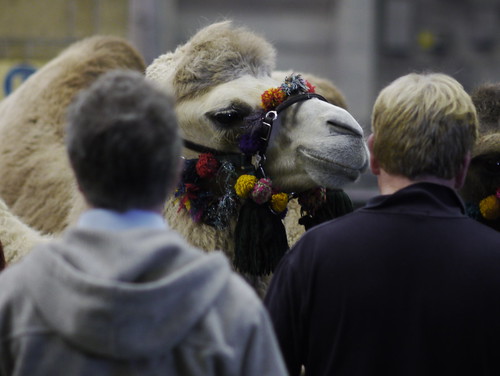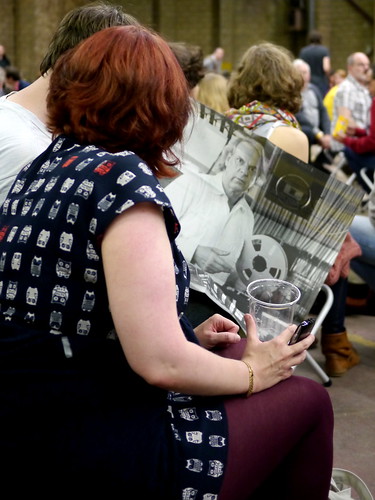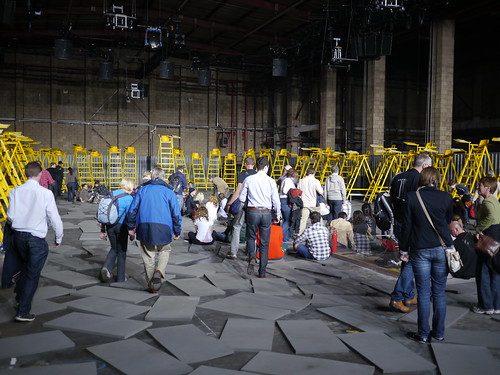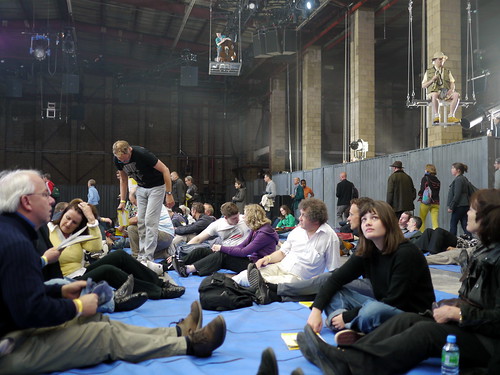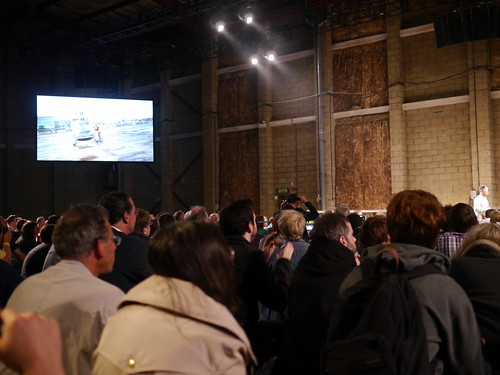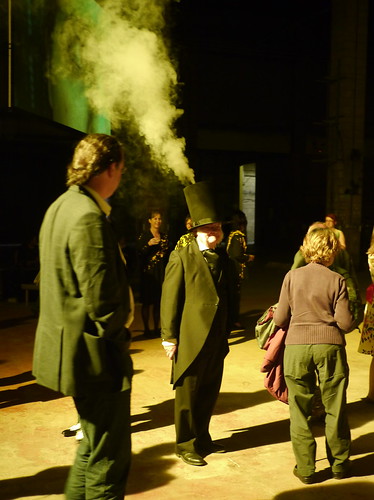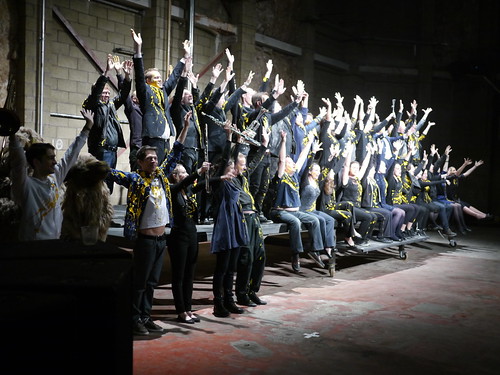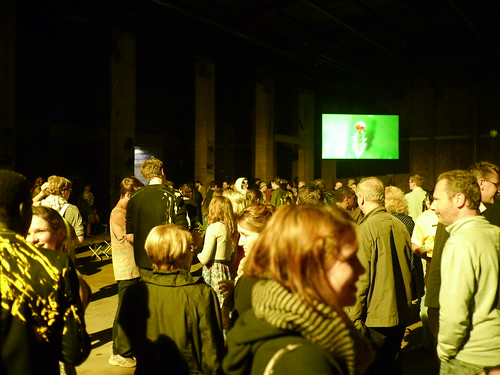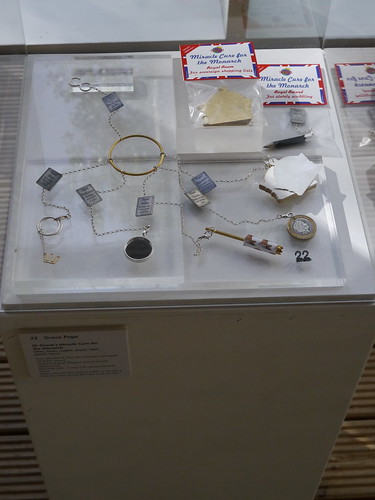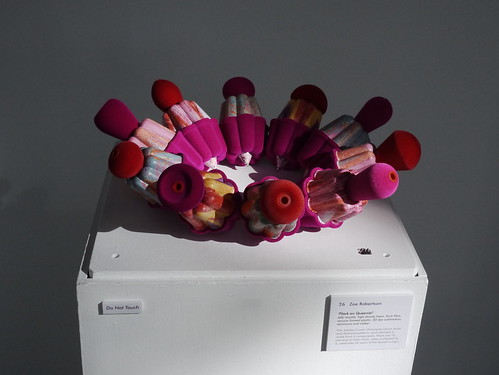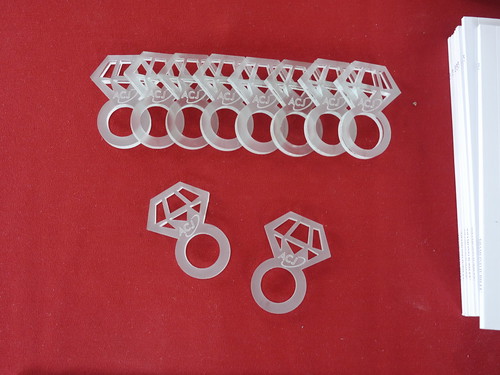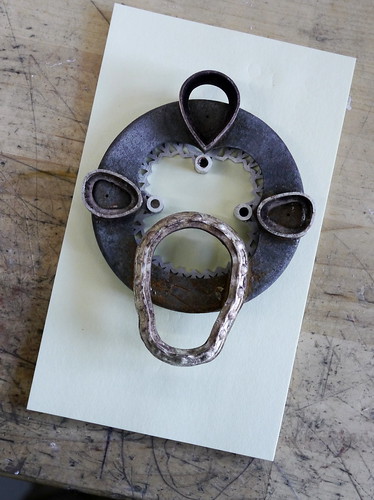I've been incredibly busy since my last post, what with all my new students starting their various courses this week in addition to a raft of other things going on.
I spent the weekend in my favourite British city, Birmingham. The reason for going there was to hear the premier of Karlheinz Stockhausen's unperformed last work, "Mittwoch Aus Licht". a truly unique and phenomenal 'opera' (in the loosest sense of the word). Scored to the tiniest detail for actors, electronics, lights, soloists, choirs, string quartet, camels and four helicopters, this piece is not likely to be performed again any time soon. (The photographs in this section might seem a bit odd, but I didn't want to take photographs during any of the performance, so these come from the bits before and after sections started.)
The performance lasted about 7 hours (with two half-hour intervals) and took place in an abandoned chemical factory, where the chemical smell still lingered. It was hard to know what to expect. I was at the final performance of the series (5 in total) and had deliberately avoided hearing too much about it and James, a friend of long-standing with whom I attended the performance also kept me in the dark, despite having seen it twice in the run already: a true fan! Actually, after the performance finished, I regretted not having been able to see it more than once: music of such complexity cannot be understood on one hearing, though I was familiar with some of the sections.
The opera is divided into six main sections:
Wednesday Greeting (Mittwochs-Gruss), an electronic work which is performed octophonically around the auditorium with the audience sitting in complete darkness, whilst bursts of light illuminate groups of actors and dancers performing little tableaux. This is a preamble to the four scenes which follow and outlines the themes of the work.
World Parliament (Welt-Parlament), a work for solo voices and choir in the form of a discussion in which delegates from all around the world sing. According to the lavish programme notes, "in session above the clouds on the top floor of a skyscraper or in a floating glass dome[...] The president introduces the topic of debate, love." (Emphases in the original.)
Orchestra Finalists (Orchester-Finalisten), in which the orchestra are suspended above the audience - who lie on the floor - and play along to an electronic score, often acting out parts. In this section, the trombone player ends up in a water-filled paddling pool, the double-bass player roars and a man with a smoking hat wanders about... who can say?
Helicopter String Quartet (Helikopter-Streichquartett), probably the most audacious piece of music ever written: a string quartet depart the hall to be piloted into the skies above the auditorium, each instrument in a separate helicopter with which they must play along, moderating their vibrato to fit in with the helicopter rotors, which are also scored! The whole thing is mixed live to the audience in the auditorium.
Michaelion, a frankly incomprehensible piece of brilliant nonsense for orchestra, electronics, pantomime camel, actors, and a short-wave radio. From the programme: "First Luciamel communicates short-wave events via a short-wave receiver..."
Wednesday Farewell (Mittwochs-Abschied), the audience leave the auditorium to a different space where they meet and cheer the performers while films and an electronic score are played.
I am at a loss as to what to make of the whole thing! I loved the music: 6+ hours passed in a blink. I didn't understand most of the action but the music makes the most fantastic sense without needing to understand what Stockhausen "meant" by it. In a way, it is unbelievable that it was actually performed in its entirety at all and everyone involved should be praised for their vision and energy in getting it together. Another feather in the cap for Birmingham!
North Glasgow College - where I teach - has been host to the Association For Contemporary Jewellery's current touring show, "Diamond Jubilee", which I have had the enormous pleasure of preparing for and setting up. The theme of the show is to reflect - I choose the word carefully, for it is not necessary a celebration - the sixty-year reign of Queen Elizabeth the Second of England, First of Scotland, our current monarch. As a committed republican, against monarchy in all forms, I wasn't really sure about what this exhibition would bring, and although it has been in Birmingham, London and Edinburgh already, the first time I saw the work was when I unpacked it to show it at the college.
The private view was this evening:
A most excellent show it is, too! My own favourite pieces are Maria Hanson's "C60":
And Dr Grace Page's "Miracle Cure for the Monarchy", a witty and stylish chatelaine:
Star of the show as far as public response, however, is probably Zoe Robertson's remarkable crown made from flocked jelly moulds, "Flock on, Queenie!":
You can even have a souvenir "diamond ring"!
Those of you who have received your copy of "Metalsmith" magazine will know that I have some work in the current Exhibition in Print, "Gothic: Sinister Pleasures" and SNAG are taking the physical exhibition to SOFA in Chicago in November and then onto the Metal Museum in Memphis. I've decided that I will go to SOFA for this event - hope to see some of my online associates there too, of course - and as it is a Very Important Event, am making a brooch to wear to the first night:
Made from some sort of cap for a container which was found many years ago in a derelict garage in Dennistoun, silver and gemstones, it is based on the line from Shakespeare's "Macbeth", "It will have blood, they say: blood will have blood" and is loosely modelled on Victorian interpretations of Scottish plaid brooches. I will, of course, be wearing it with my kilt!


